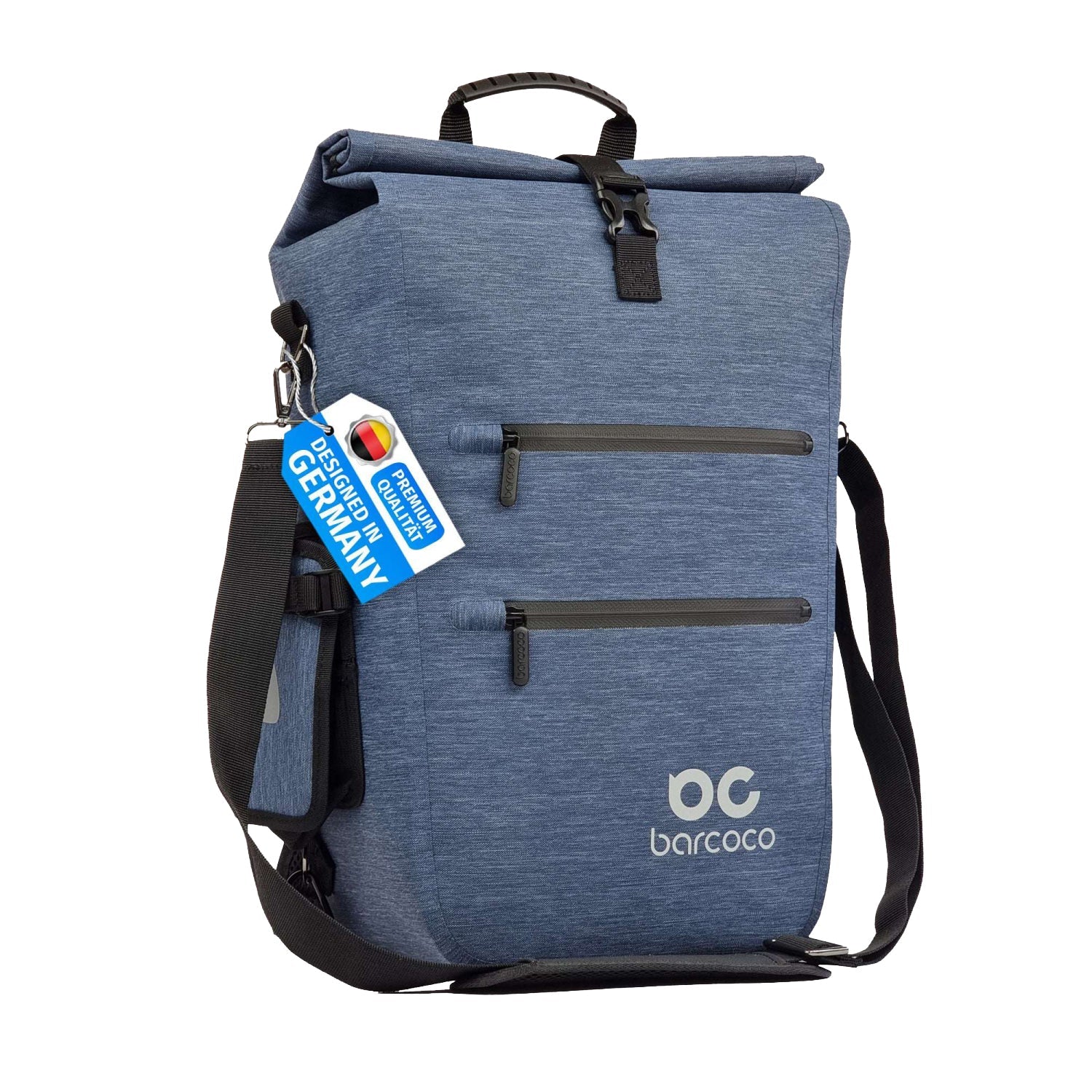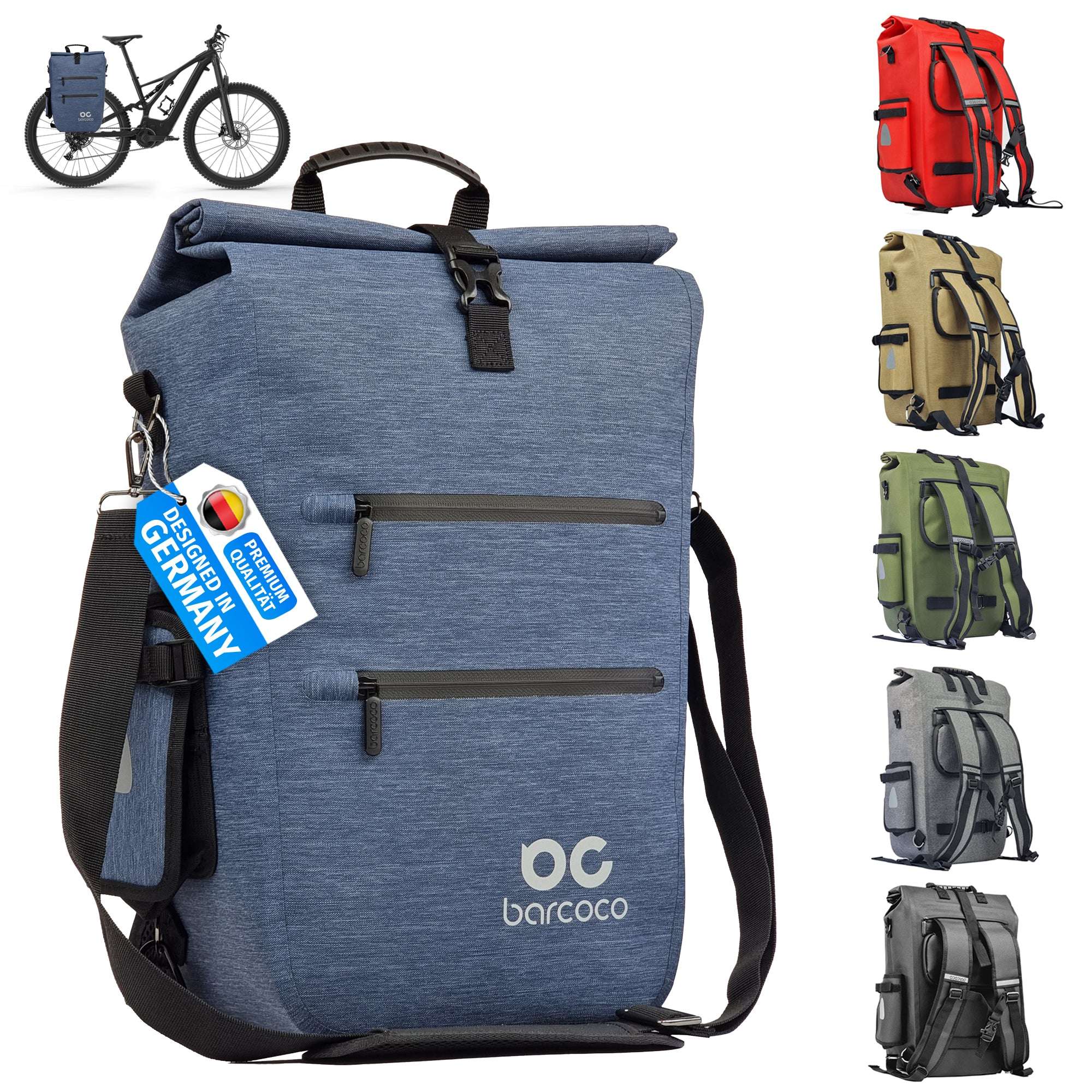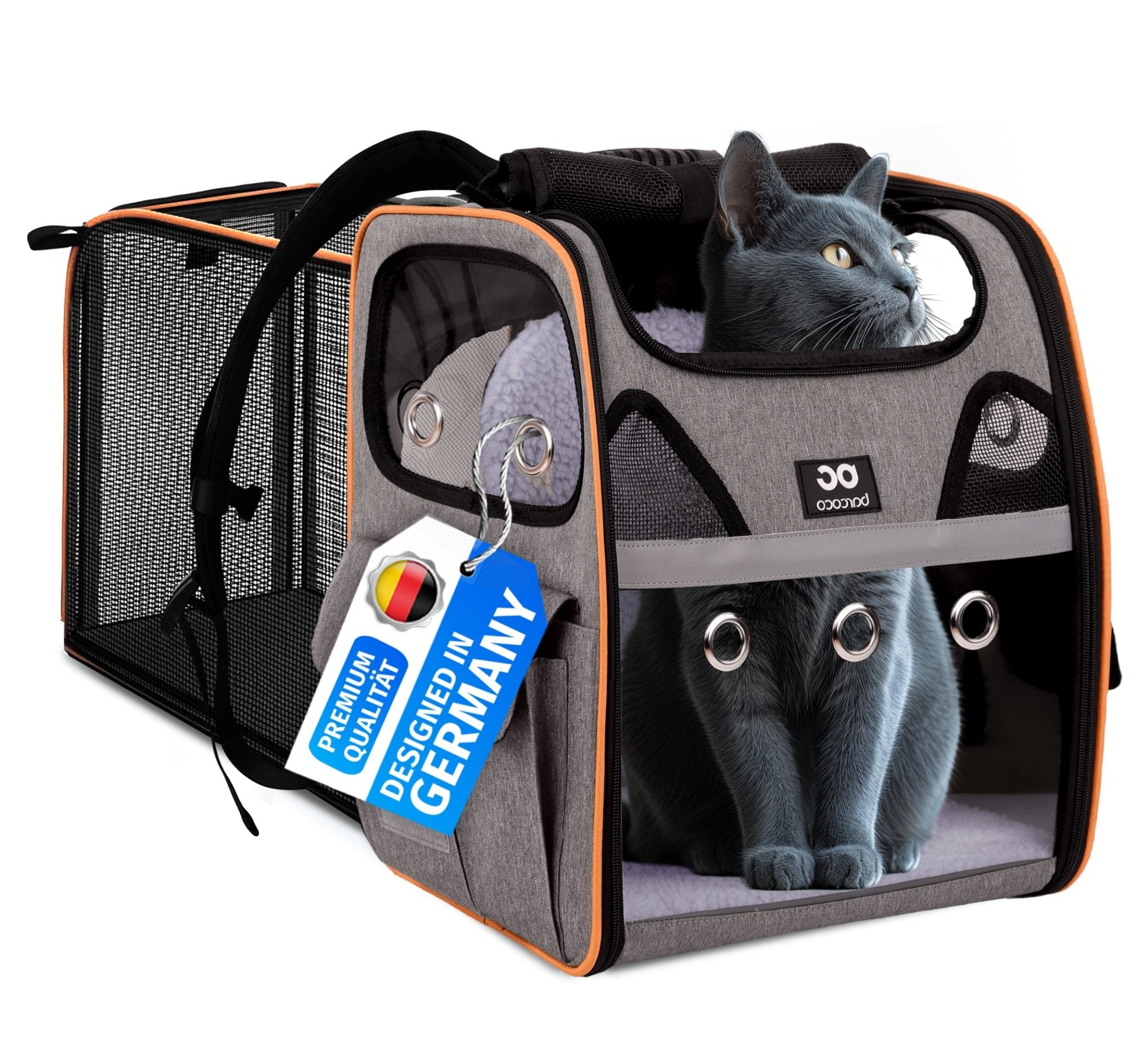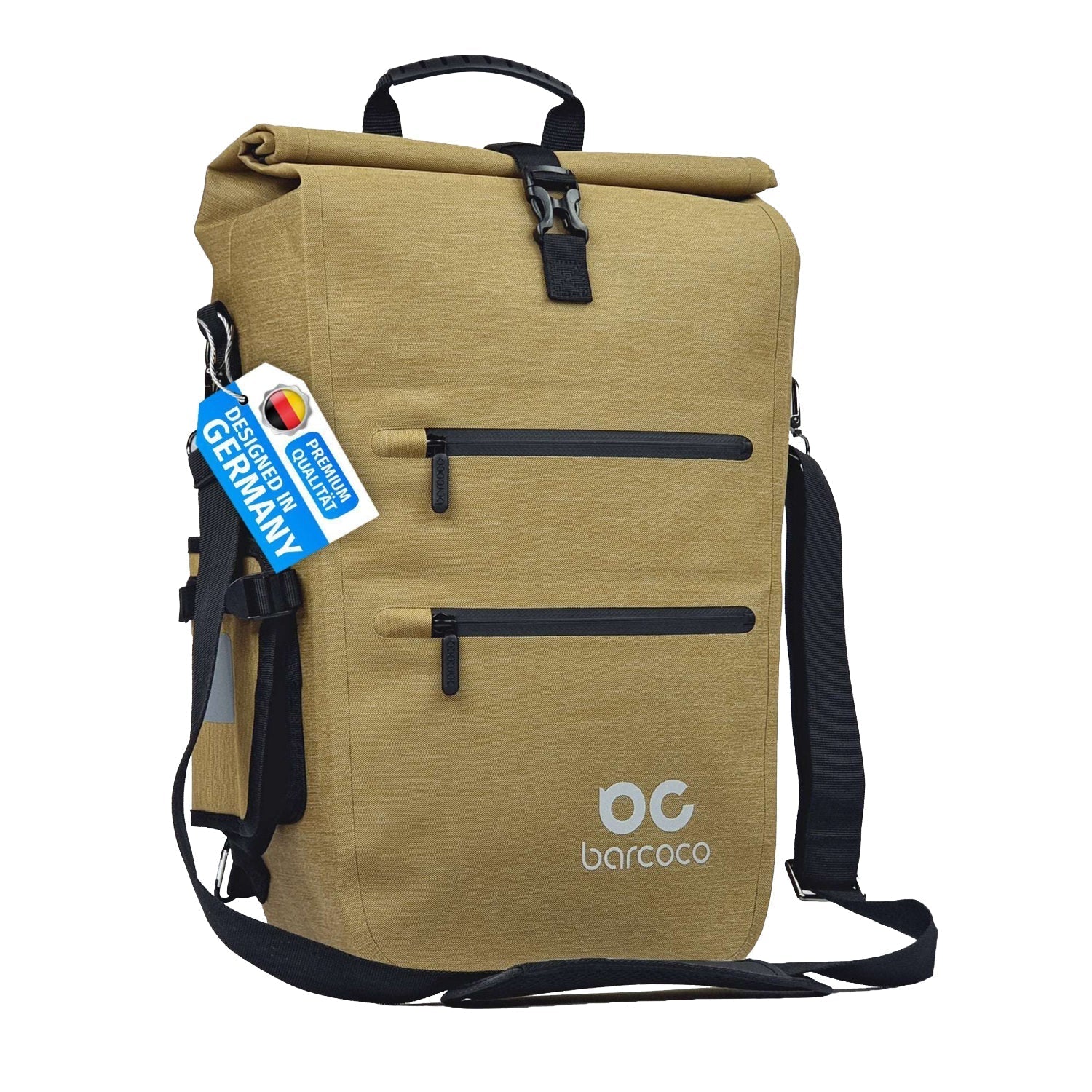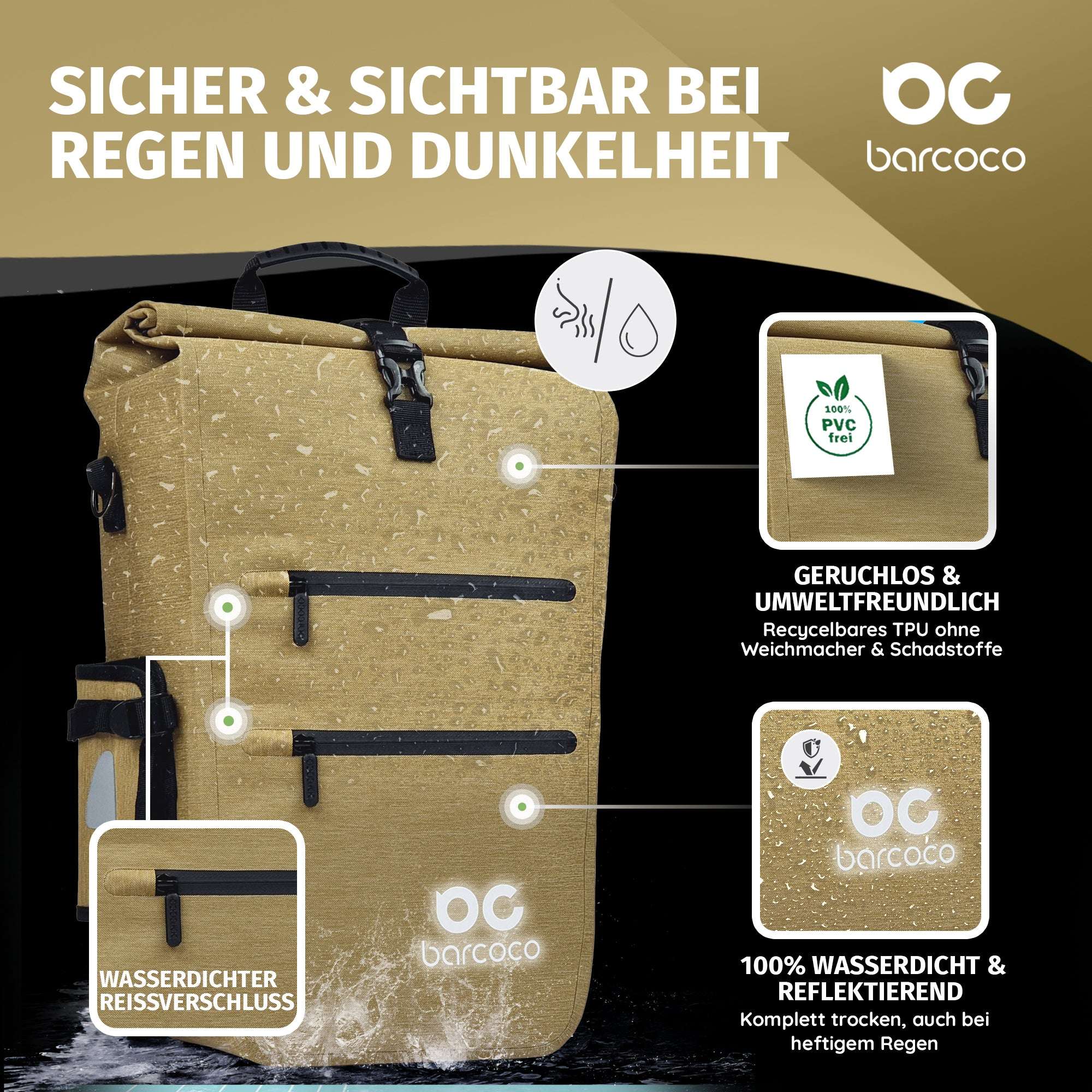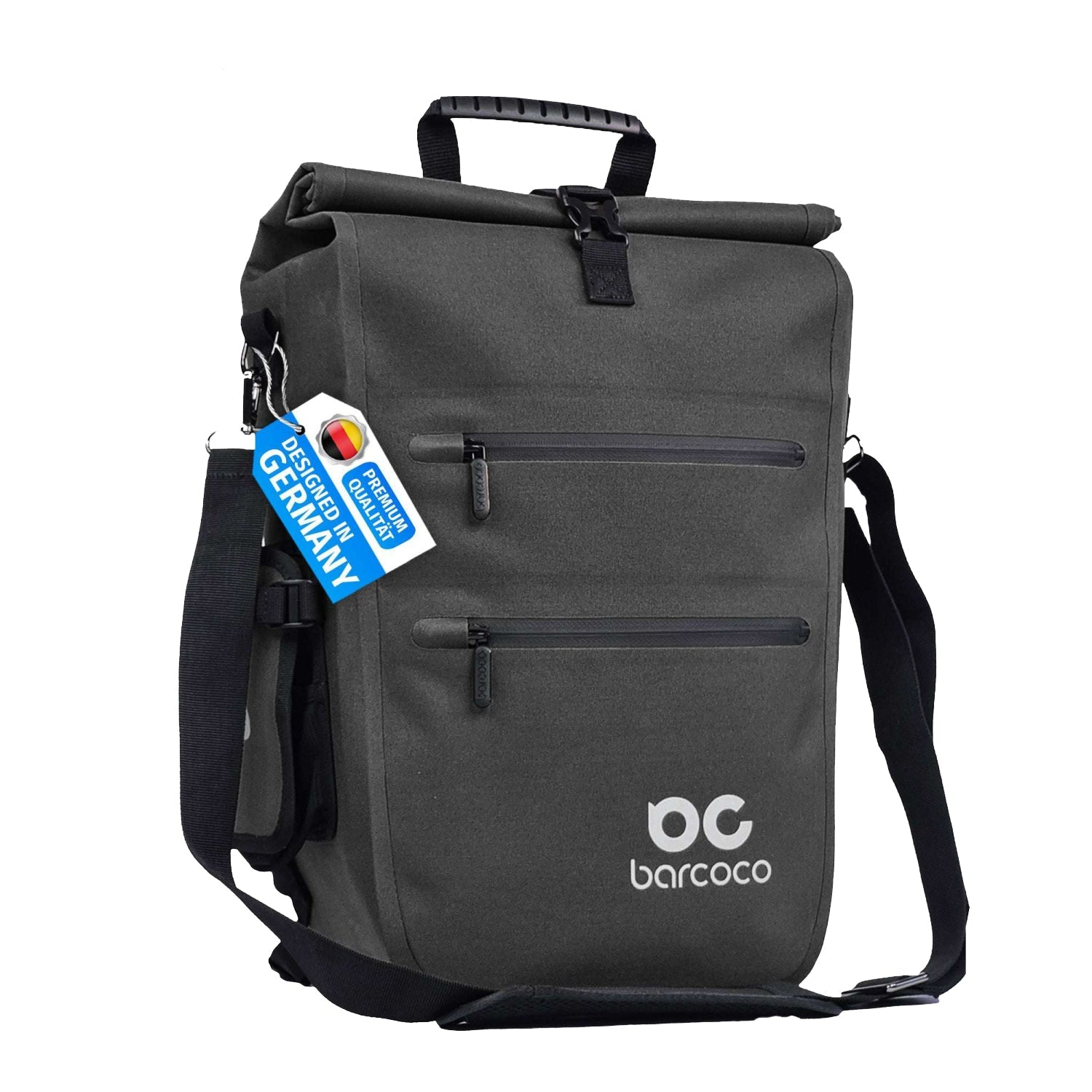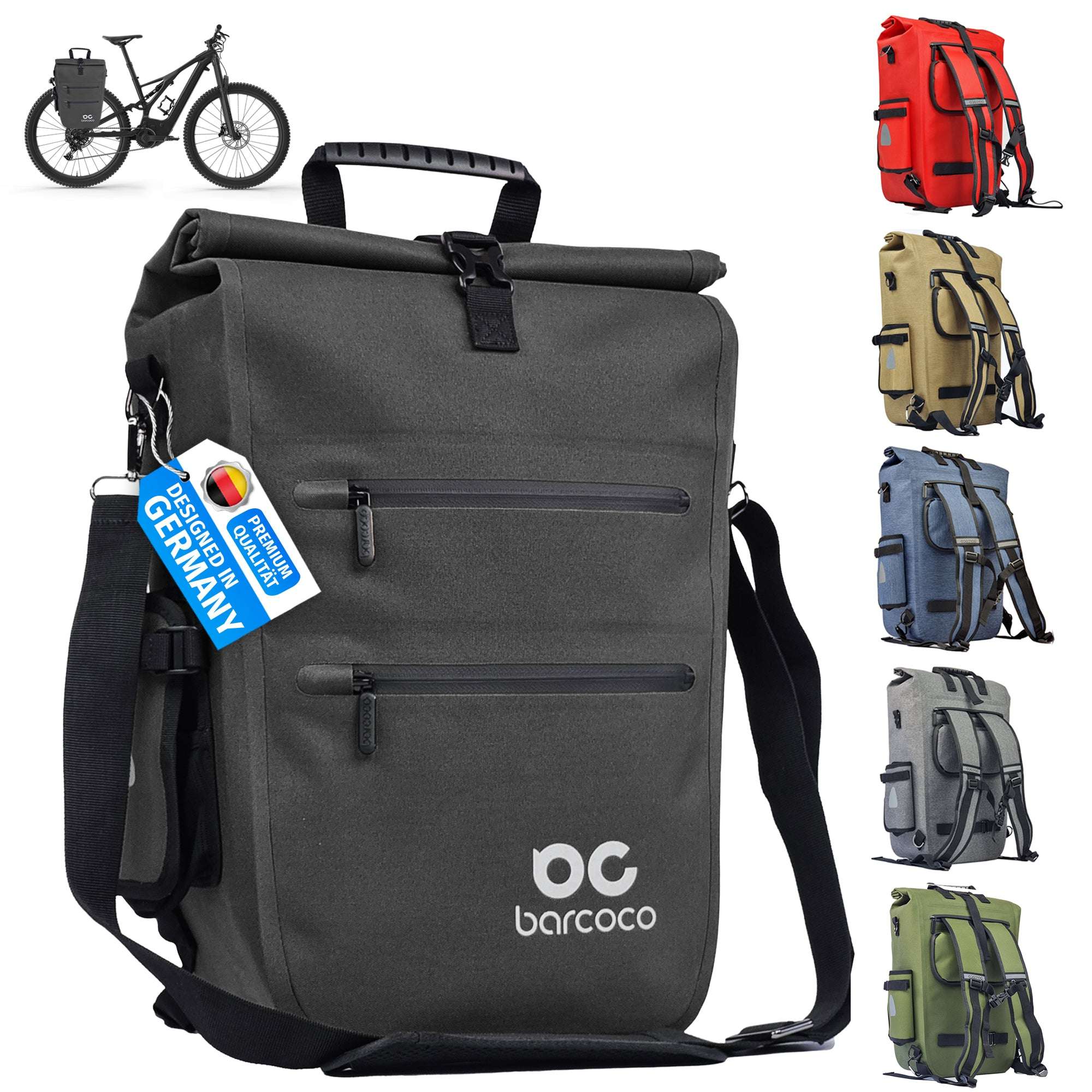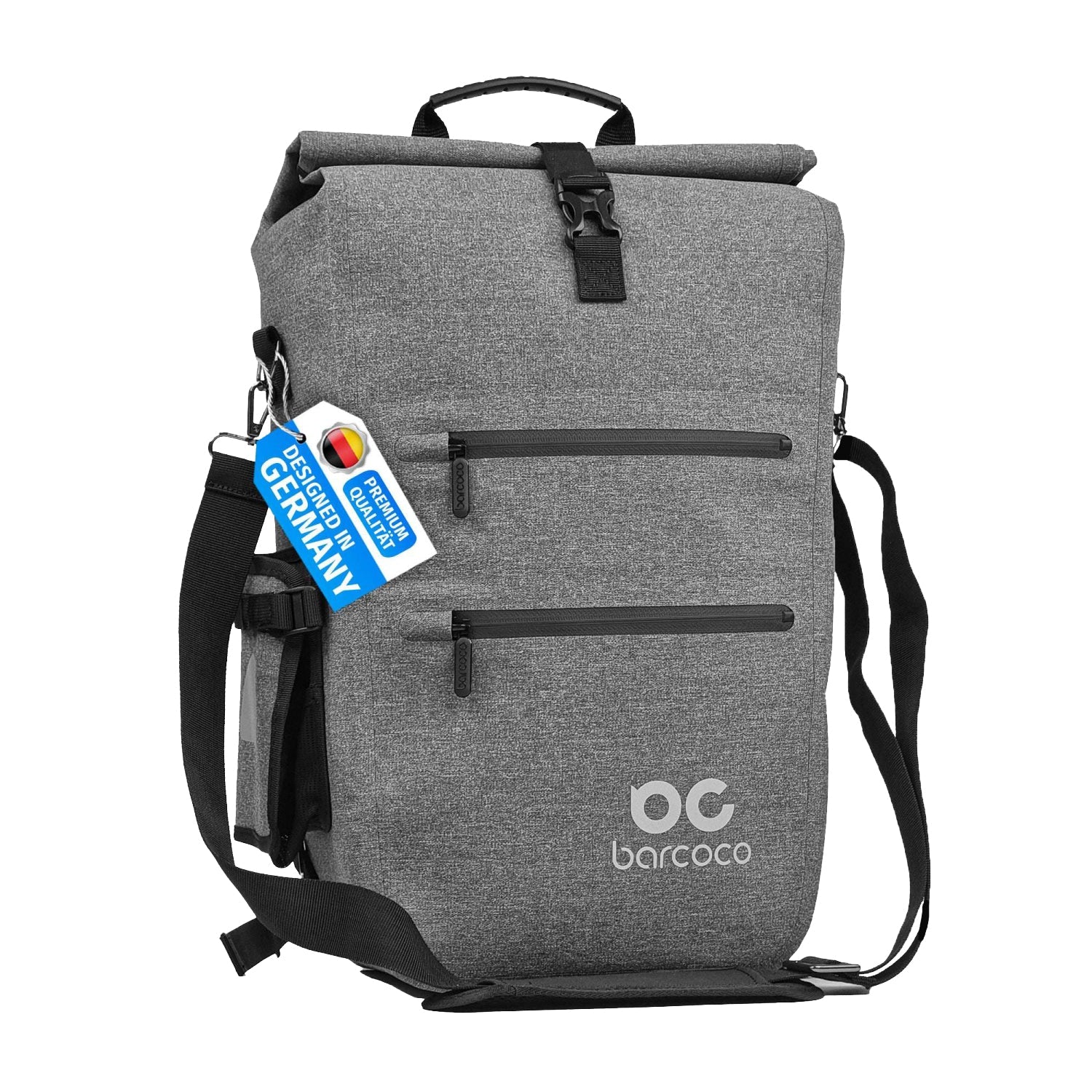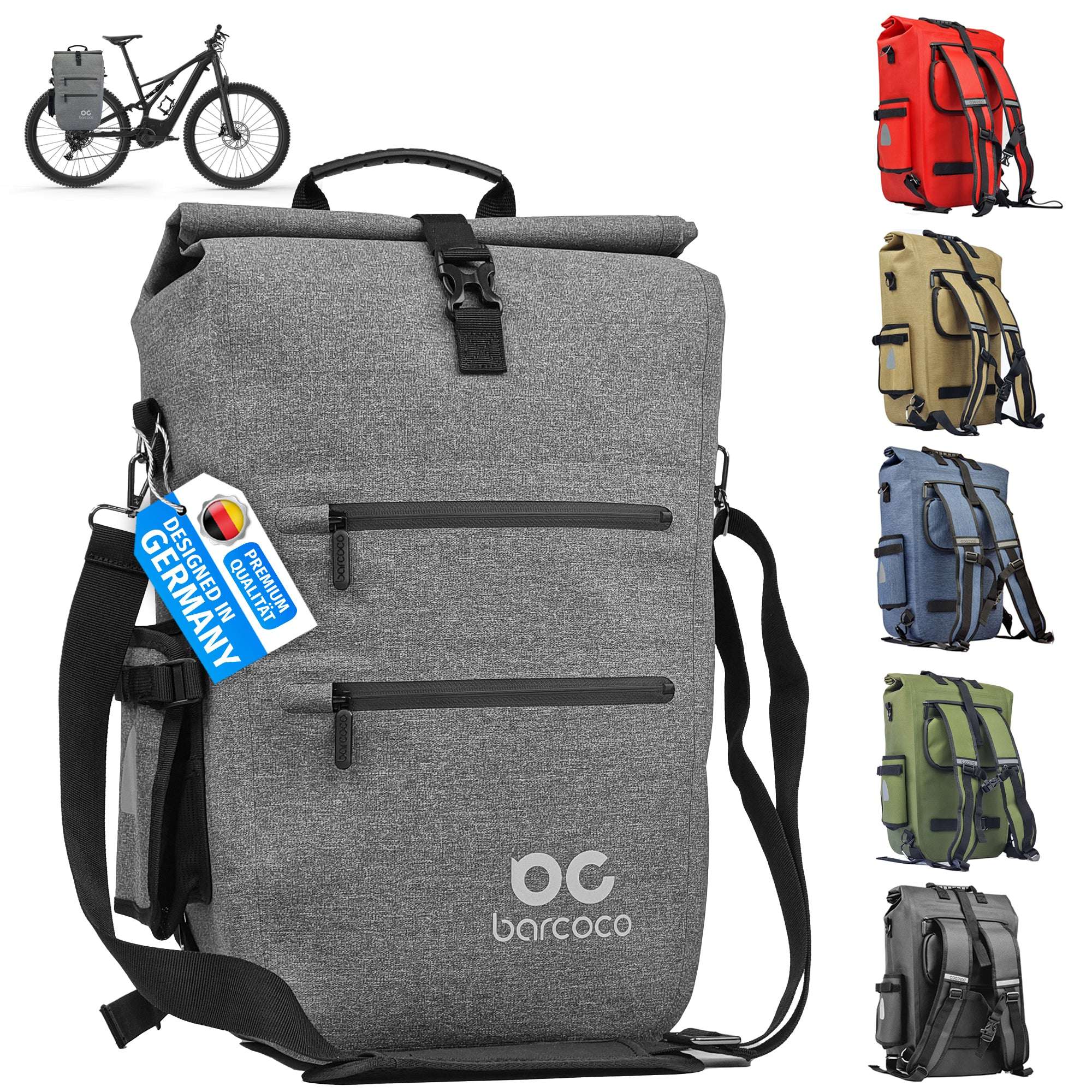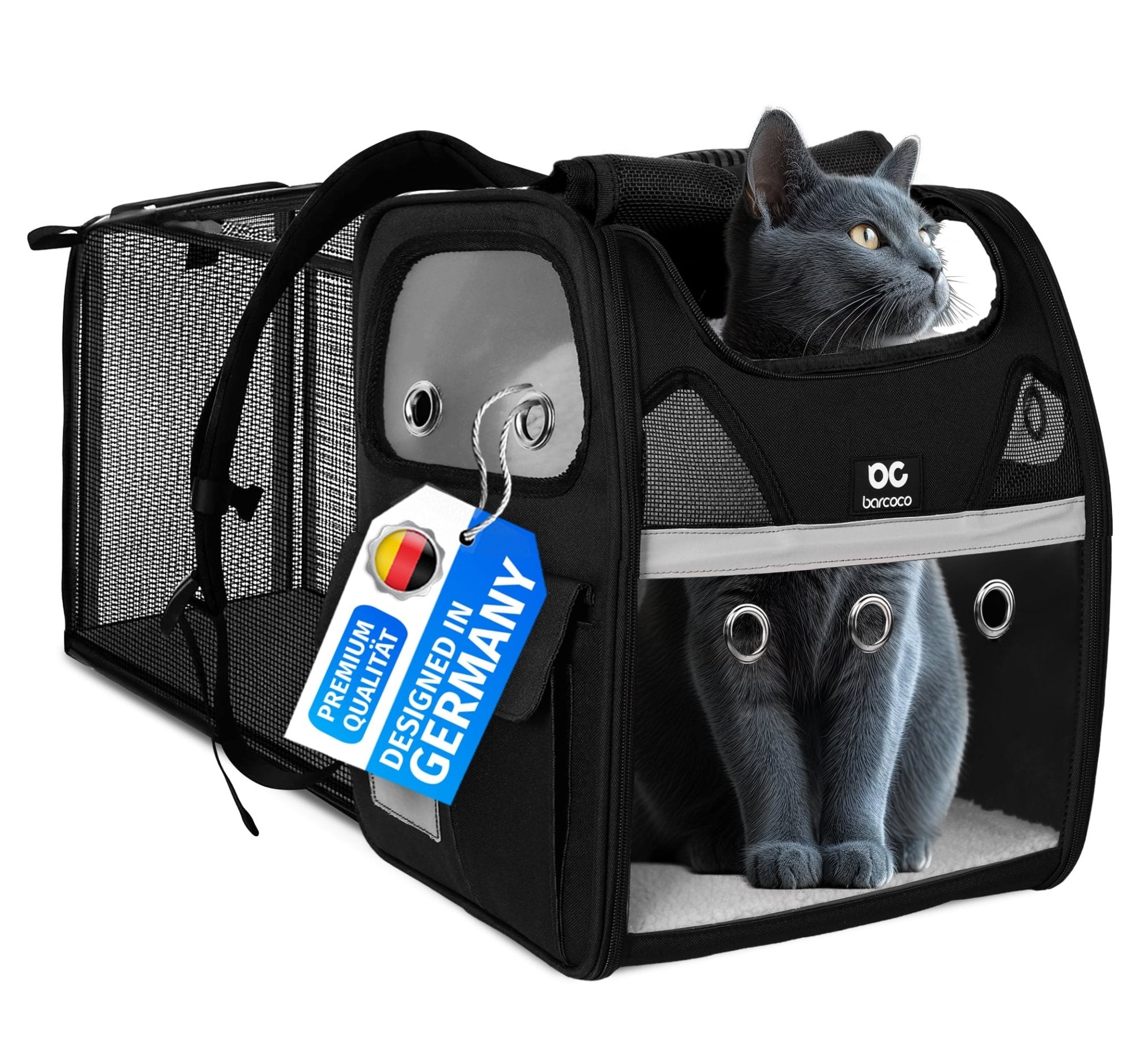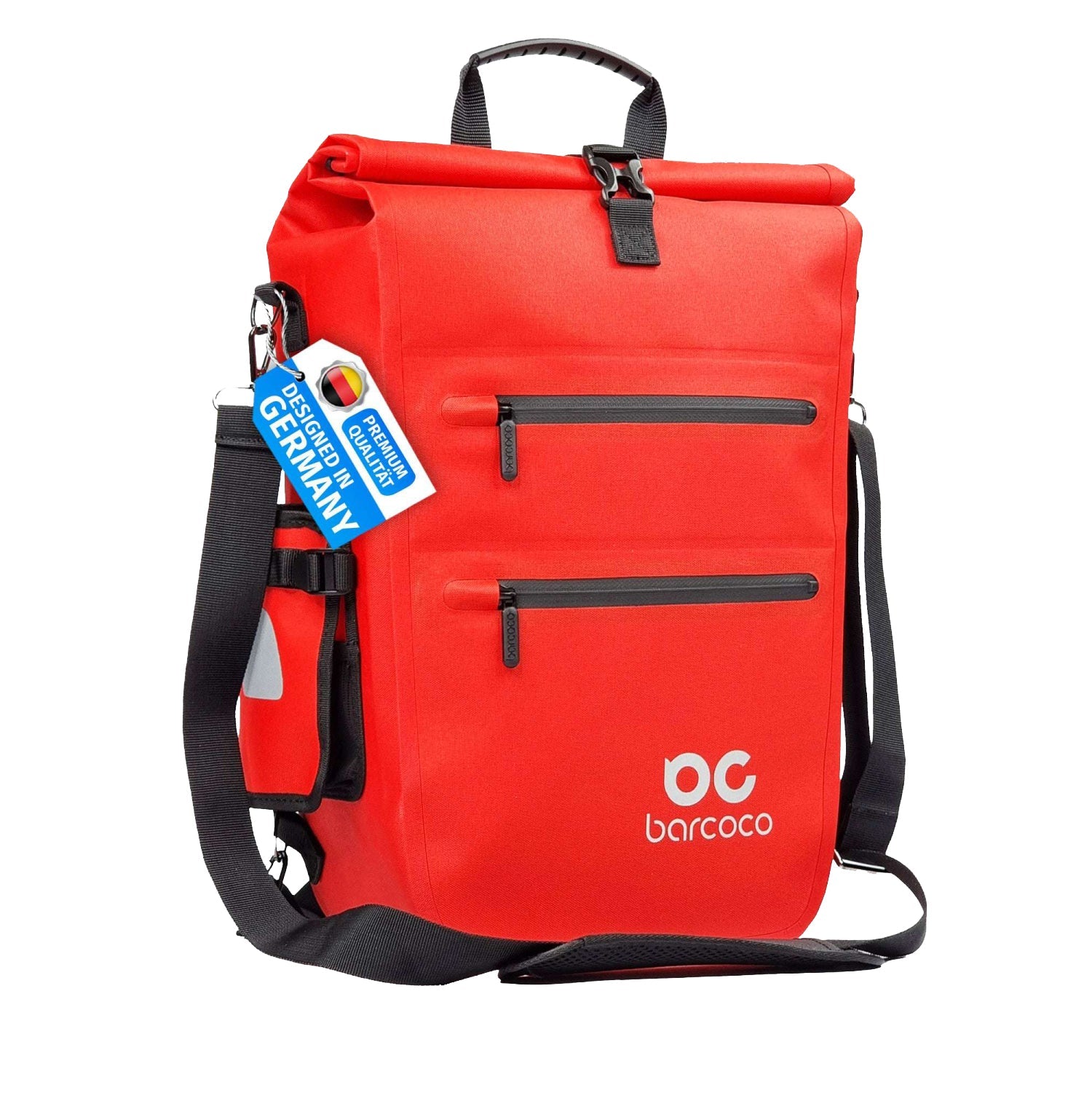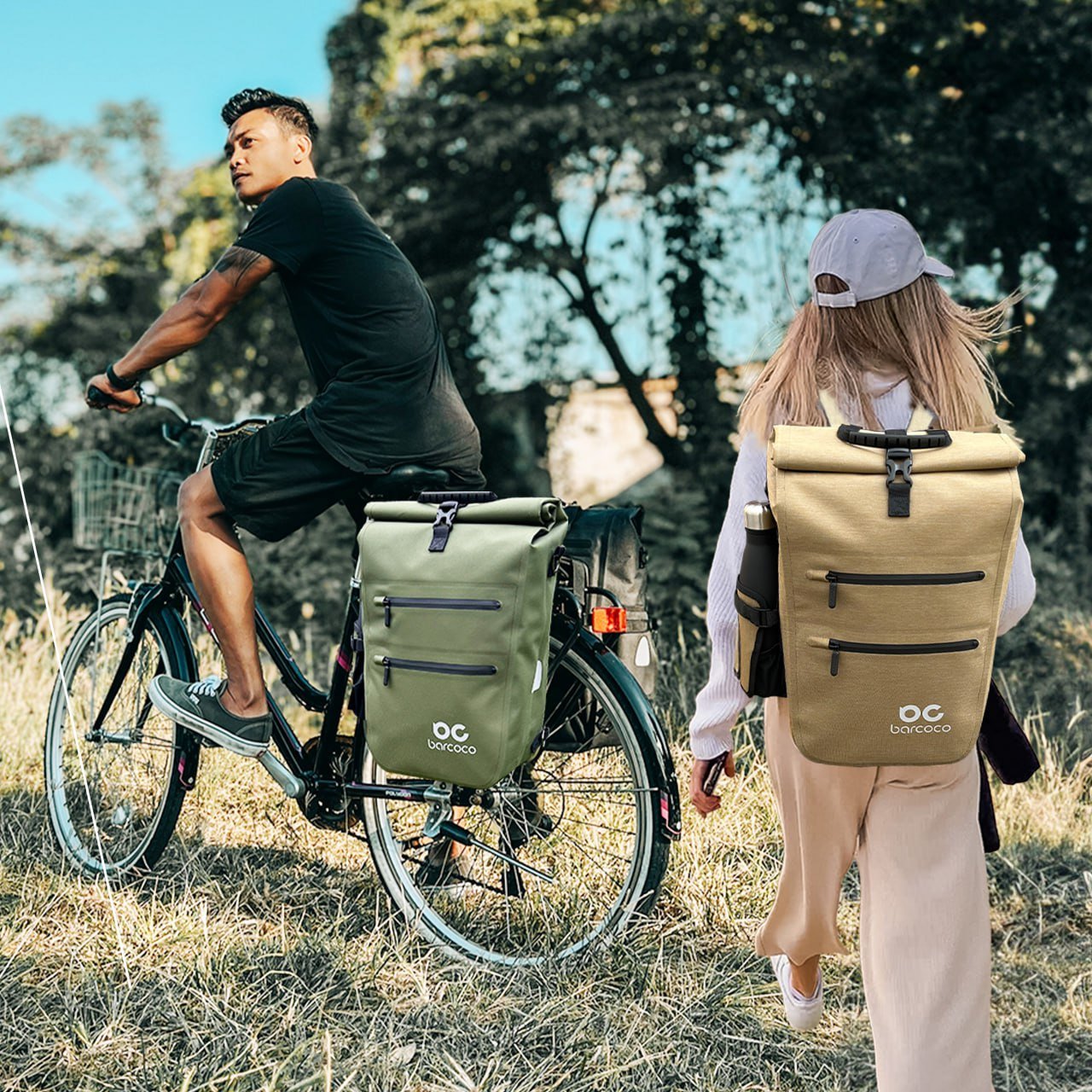Which bike bag is the best?
Which bike bag is the best?
A comparison of Barcoco panniers with other brands
Table of contents:
Which bike bag is the best? - A comparison of Barcoco panniers with other brands
Introduction
Which bike bag is the best?
This is a question that many cyclists ask themselves when they are looking for a practical and comfortable solution to store their belongings on the bike Bicycle to transport. Whether for the daily commute to work, a weekend shopping trip or a long bike ride on holiday - one pannier is an indispensable companion for every cyclist.
But which pannier is the best for you? That depends on many factors, such as your bike type, your transport needs, your budget and personal taste. There are a variety of different types of Bicycle bags that differ in size, shape, material, attachment and design. Each type of pannier has its pros and cons that you should consider when making your selection.
In this blog post we want to give you an overview of the different types of panniers and show you which criteria you should consider when choosing a pannier. We also want to introduce you to a special brand of panniers that is characterized by its high quality, innovative design and versatile functionality: Barcoco panniers for luggage racks . These bags are not only waterproof, strong and durable, but also 3-in-1 bags that you as Pannier bag , shoulder bag or backpack can be used. We want to show you how Barcoco panniers compare to other brands and why they are one of the best options for you.
So if you want to know which pannier is the best for you, read on and learn more about this exciting topic!
I hope this meets your expectations. Let me know if you want more changes!
Why do you need a pannier?
One pannier is a useful accessory for every cyclist who wants to transport his belongings on the bike. A bicycle bag offers you many advantages, such as:
- It allows you to take more luggage with you without having to carry it on your back. This protects your back and increases yours driving comfort .
- It protects your belongings from dirt, moisture and theft. A good pannier is waterproof or at least water-repellent and has a secure closure. Plus, you can easily detach them and take them with you when you park your bike.
- It improves your safety and visibility on the road. A good bike bag has reflective elements or lights that make you more visible in the dark or in poor weather conditions.
- It gives your bike an individual style. A good bike bag has an attractive design and a color that matches your bike or provides a nice contrast.
One pannier is therefore a practical and stylish accessory for every cyclist. But what kind of pannier should you choose? You can find out in next section .
What types of panniers are there?
There are many different types of panniers that differ in size, shape, material, attachment and design. Each type of pannier has its pros and cons that you should consider when making your selection. Here are some of the most common types of panniers :
Pannier bags:
Pannier bags are panniers that are attached to the bike's pannier rack. They are usually rectangular or trapezoidal in shape and have a large opening at the top. They can be made of different materials, such as nylon, polyester, leather or canvas. They often have multiple compartments or pockets to keep things organized. They can also be equipped with a shoulder strap or a carrying handle to make them easier to take off and carry.
The advantages of pannier bags are:
- They offer plenty of storage space for luggage, shopping or other things.
- They are stable and securely attached to the luggage rack and do not wobble when driving.
- They are easily accessible and easy to open and close.
- They are usually waterproof or at least water-repellent and protect things from getting wet.
The disadvantages of pannier bags are:
- They can affect the handling of the bicycle, especially when heavily loaded. They can upset your balance or shift your center of gravity.
- They can limit rear vision or obscure taillights if they are too big or too high.
- They can interfere with the installation of a child seat or bike stand if they are too wide or too deep.
- They can be inconvenient if you frequently change bikes or use public transport. You have to take them off and take them with you every time.
bike backpacks
Bicycle backpacks are bicycle bags that are carried on the back. They are usually made of light and breathable material and have padded shoulder straps and a chest or waist strap. They often have multiple compartments or pockets to keep things organized. They can also be equipped with a helmet holder, a hydration bladder or a rain cover.
The advantages of bicycle backpacks are:
- They are flexible and can be used universally. You can use them for different bike types and activities.
- They are comfortable and ergonomic. They distribute the weight evenly on the back and avoid pressure points or chafing.
- You are safe and visible. They do not affect the rear view or the taillights. They often have reflective elements or lights that increase visibility.
- They are practical and easy to use. No need to detach or attach them when changing bikes or parking.
The disadvantages of bicycle backpacks are:
- They can strain or overheat your back, especially when heavily loaded. They can lead to back pain, tension or perspiration.
- They can affect the handling of the bike, especially if they are too big or too high. They can upset balance or increase drag.
- You cannot protect things from getting wet if they are not waterproof. You have to cover them with a rain cover or use a waterproof case.
- They can increase the risk of theft if left unattended. You always have to take it with you or lock it when you park the bike.
Saddlebags:
Saddlebags are bicycle bags that are attached under the saddle of the bicycle. They are usually small and round or oval and have a zipper on the side or on the top. They are made of different materials, such as nylon, polyester, leather or neoprene. They often have a compartment or pocket to store things. They can also be equipped with a Velcro or a quick-release fastener to make them easier to detach and attach.
The advantages of saddlebags are:
- They are unobtrusive and space-saving. They do not interfere with the handling or the appearance of the bike.
- They are ideal for small things that you always want to have with you, such as keys, money, mobile phones or tools.
- They are usually waterproof or at least water-repellent and protect things from getting wet.
- You are safe and visible. They do not affect the rear view or the taillights. They often have reflective elements or lights that increase visibility.
The disadvantages of saddlebags are:
- They offer little storage space for luggage, shopping or other things.
- They are difficult to access and awkward to open and close.
- They can affect saddle comfort, especially if they are too big or too hard. You may rub or press on your thighs.
- They can hinder the assembly of a child seat or a bicycle stand if they hang too low.
handlebar bags:
Handlebar bags are bicycle bags that are attached to the handlebars of the bicycle. They are usually square or rectangular and have a flap or lid at the top. They are made of different materials, such as nylon, polyester, leather or canvas. They often have multiple compartments or pockets to keep things organized. They can also be equipped with a shoulder strap or a carrying handle to make them easier to take off and carry.
The advantages of handlebar bags are:
- They offer a good overview of the things you have with you. You can easily see and reach them without dismounting.
- They are ideal for important things that you always want to have in view, such as a map, GPS, mobile phone or snacks.
- They are usually waterproof or at least water-repellent and protect things from getting wet.
- You are safe and visible. They do not affect forward visibility or headlights. They often have reflective elements or lights that increase visibility.
The disadvantages of handlebar bags are:
- They offer little storage space for luggage, shopping or other things.
- They can affect the handling of the bicycle, especially when heavily loaded. They can make steering more difficult or limit the steering angle.
- They can interfere with mounting a bike basket or bike computer if they are too big or too wide.
- They can be inconvenient if you frequently change bikes or use public transport. You have to take them off and take them with you every time.
frame bags
Frame bags are bicycle bags that are attached to the frame of the bicycle. They are usually triangular or rectangular and have a side or top zipper. They are made of different materials, such as nylon, polyester, leather or neoprene. They often have a compartment or pocket to store things. They can also be equipped with a Velcro or a quick-release fastener to make them easier to detach and attach.
The advantages of frame bags are:- They are unobtrusive and space-saving. They make optimal use of the space in the frame and do not interfere with the handling or the appearance of the bike.
- They are ideal for small things that you always want to have with you, such as keys, money, mobile phones or tools.
- They are usually waterproof or at least water-repellent and protect things from getting wet.
- You are safe and visible. They do not affect forward visibility or headlights. They often have reflective elements or lights that increase visibility.
The disadvantages of frame bags are:
- They offer little storage space for luggage, shopping or other things.
- They are difficult to access and awkward to open and close.
- They can affect frame comfort, especially if they are too big or too hard. You may rub or pinch your knees.
- They can hinder the installation of a bottle cage or a bike lock if they are too wide or too deep.
Panniers (luggage bags)
panniers are Panniers that attach to the sides of the bike's luggage rack. They are usually cylindrical or conical and have a flap or lid at the top. They are made of different materials, such as nylon, polyester, leather or canvas. They often have multiple subjects or Pockets to organize things. They can also be equipped with a shoulder strap or a carrying handle to make them easier to take off and carry.
The benefits of panniers are:
- They offer plenty of storage space for luggage, shopping or other things.
- They are firmly and securely attached to the sides of the luggage rack and do not wobble when driving.
- They are easily accessible and easy to open and close.
- They are mostly waterproof or at least water-repellent and protect things from getting wet.
The disadvantages of panniers are:
- They can affect the handling of the bicycle, especially when heavily loaded. They can upset your balance or shift your center of gravity.
- They can limit rear vision or obscure taillights if they are too big or too high.
- They can interfere with the installation of a child seat or bike stand if they are too wide or too deep.
- They can be inconvenient if you frequently change bikes or use public transport. You have to take them off and take them with you every time.
bike trailer
Bicycle trailers are trailers that are towed behind the bicycle. They consist of a frame with wheels and a box or tarpaulin. They often have a hitch that attaches to the rear of the bike. They can be made of different materials, such as metal, plastic or wood. They often have a large compartment or pocket to store things. They may also be fitted with a rain cover, suspension or brake.
The advantages of bicycle trailers are:
- They offer a lot of storage space for luggage, shopping or other things.
- They are independent of the bike type and can be used for different bikes.
- They are usually waterproof or at least water-repellent and protect things from getting wet.
- You are safe and visible. They often have their own taillights or lights that increase visibility.
The disadvantages of bike trailers are:
- They can severely affect the handling of the bicycle, especially when heavily loaded. They can make steering, braking and accelerating more difficult or delaying.
- They can severely limit rearward visibility or obscure taillights if they are too large or too long.
- You can prevent the installation of a child seat or a bike stand if they are too wide or too deep.
- They can be very inconvenient if you frequently change bikes or use public transport. You have to uncouple them and take them with you every time.
What criteria should you consider when choosing a pannier?
As you saw in the first part of the post, there are many different types of Bicycle bags that differ in size, shape, material, attachment and design. Each type of pannier has its pros and cons that you should consider when making your selection. But how can you be the best pannier find for you? What criteria should you consider when choosing a pannier?
To answer that question, we've created a list of seven important criteria to consider when choosing a pannier should note. These criteria are:
- size and volume
- material and processing
- waterproofness and closure
- Attachment and detachability
- style and colour
- security and visibility
- Comfort and ergonomics
We will now explain each of these criteria to you in more detail and show you what you should pay attention to.
size and volume
The first criterion to consider when choosing a bike bag is the size and volume of the bag. The size and volume of a pannier determine how much space you have for your things and how much weight you can transport on the bike.
The size and volume of a bicycle bag depend on the type of bag. For example, luggage carrier bags or panniers usually have a larger volume than saddlebags or handlebar bags. The size and volume of a pannier also depend on your transport needs. For example, you need a larger bag if you go on a long bike ride or do a lot of shopping.
When choosing a bike bag, you should make sure that it offers enough space for your things, but is not too big or too heavy. A bag that is too large or too heavy can affect the handling of the bike, disturb the balance or shift the center of gravity. In addition, a bag that is too large or too heavy can restrict rearward visibility or cover the rear lights.
In order to find the right size and volume of a bicycle bag, you should ask yourself the following questions:
- What do you want to transport with the pannier? How big and how heavy are your things?
- How often and how long do you want to use the pannier? Do you do short or long trips? Do you drive daily or occasionally?
- What type of bike do you have? How big is your luggage rack, your saddle or your handlebars?
- How much space do you have on the bike? How much space do you need for other accessories, such as a child seat, a bike basket or a bike computer?
With these questions you can estimate how much space you need for your things and how much weight you can transport on the bike. You can then choose a pannier that fits your space needs and weight limit.
material and processing
The second criterion that you should consider when choosing a bicycle bag is the material and the workmanship of the bag. The material and workmanship of a bicycle bag determine how robust, durable and easy-care the bag is.
The material and finish of a bicycle bag depend on the type of bag. For example, luggage carrier bags or panniers are usually made of more stable and heavier materials than saddlebags or handlebar bags. In addition, the material and workmanship of a bicycle bag depend on your quality requirements. For example, you need a higher quality bag if you are going on a long bike trip or if you value design.
When choosing a bicycle bag, you should make sure that it is made of a robust, durable and easy-care material and that it is well made. A good material is, for example, nylon, polyester, leather or canvas. Good workmanship is characterized, for example, by clean seams, stable zippers or solid buckles.
In order to find the right material and the right workmanship for a bicycle bag, you should ask yourself the following questions:
- How durable is the pannier? How often and how intensively do you want to use them? Do you need to protect them from scratches, bumps or wear and tear?
- How weatherproof is the bike bag? How often and how long do you intend to use them outdoors? Do you need to protect them from rain, snow or sun?
- How easy is the bike bag to look after? How often and how thoroughly do you want to clean them? Do you need to protect them from dirt, stains or odors?
- How stylish is the pannier? How important is the design of the bag to you? Do you need to match them with your bike or your clothes?
Based on these questions, you can estimate how robust, durable and easy-care your pannier needs to be and how much value you place on the design. You can then choose a pannier that suits your quality requirements.



